Top 10 Lithium Polymer Batteries for Electronics Projects in 2025
Here are the top 10 lithium polymer batteries for electronics projects in 2025:
- BYD 3.7V 2200mAh
- Tattu 11.1V 1300mAh
- Turnigy 7.4V 1000mAh
- Venom 7.4V 5000mAh
- Zippy Compact 3.7V 850mAh
- Gens Ace 11.1V 2200mAh
- EBL 3.7V 2000mAh
- HRB 14.8V 6000mAh
- Bonka Power 7.4V 2200mAh
- Ovonic 11.1V 1500mAh
The global lithium polymer battery market reached USD 17.7 billion in 2024 and is projected to hit USD 36.6 billion by 2032, growing at 8.83% CAGR.
LiPo batteries offer lightweight, flexible designs for compact electronics. When you select a battery, you must consider voltage, capacity, and discharge rate. Safety features and proper charging protect your devices and ensure longevity.
| Factor | Description |
|---|---|
| Safety | Prevent hazards during use. |
| Lifespan | Reduce replacement frequency. |
| Design Flexibility | Support various applications. |
| Energy Density | Enhance performance in compact devices. |
| Application Suitability | Meet your project’s needs. |
| Voltage | Match your device requirements. |
| Capacity | Support your device's power needs. |
| Self-discharge Rates | Maintain charge over time. |
| Temperature Range | Operate within required range. |
| Cost | Stay within your budget. |
| Size and Shape | Fit your project’s constraints. |
| Life Cycle | Endure more charge cycles. |
| Battery Chemistry | Optimize performance and safety. |
| Availability | Ensure market access. |
| Transportation Regulations | Follow shipping and handling rules. |
Key Takeaways
- Choose the right lithium polymer battery by matching voltage and capacity to your project's needs. This ensures optimal performance and longevity.
- Prioritize safety features like over-discharge and over-charge protection. These features help prevent hazards and extend battery life.
- Consider the discharge rate when selecting a battery. Higher rates are essential for high-performance devices like drones and RC vehicles.
- Always use a charger designed for lithium polymer batteries. This prevents damage and ensures safe charging practices.
- Research and compare different battery models to find the best fit for your project. Use the provided comparison table for quick reference.
Top 10 Lithium Polymer Battery Picks
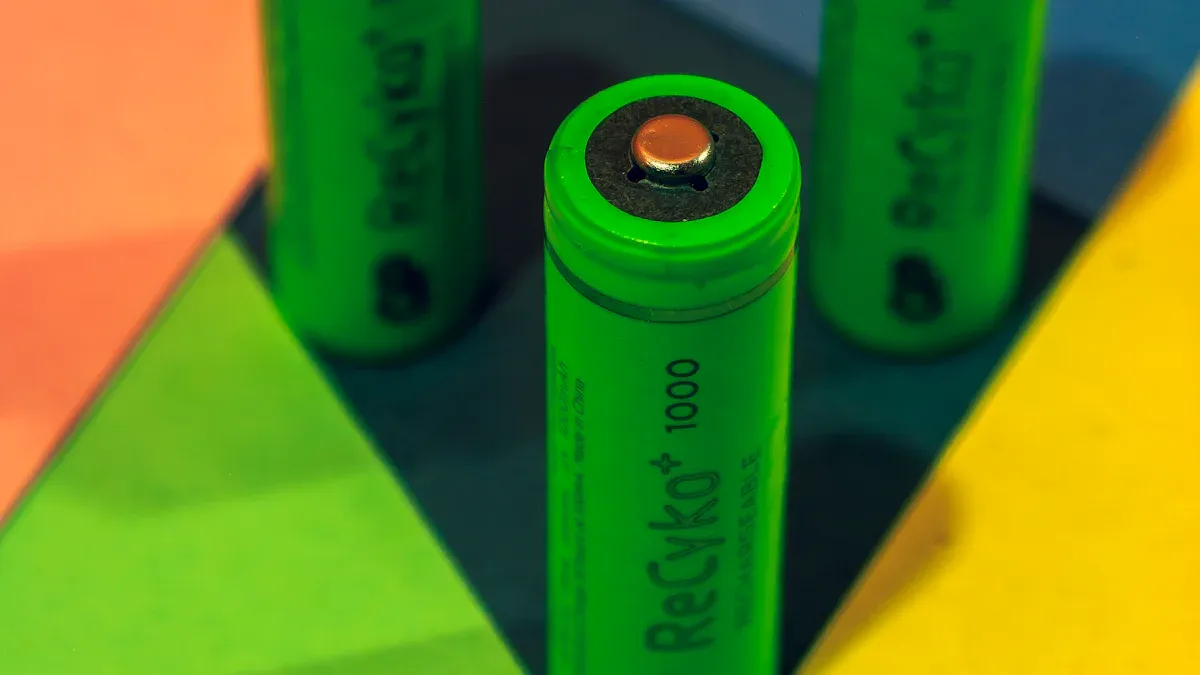
Quick Overview
When you select a lithium polymer battery for your electronics project, you want reliability, safety, and performance. Here is a quick overview of the top 10 picks for 2025. Each battery offers unique advantages for different applications.
-
BYD 3.7V 2200mAh
You get high energy density and stable discharge. BYD batteries work well in portable devices and sensors. -
Tattu 11.1V 1300mAh
Tattu provides consistent power output. You can use this battery in drones and RC vehicles that need reliable bursts of energy. -
Turnigy 7.4V 1000mAh
Turnigy batteries offer compact size and flexible design. You benefit from easy integration into small electronics. -
Venom 7.4V 5000mAh
Venom delivers extended runtime. You can power robotics and larger projects that require long-lasting performance. -
Zippy Compact 3.7V 850mAh
Zippy Compact fits tight spaces. You get lightweight construction for wearable tech and miniature devices. -
Gens Ace 11.1V 2200mAh
Gens Ace ensures high discharge rates. You can rely on this battery for demanding applications like racing drones. -
EBL 3.7V 2000mAh
EBL offers robust safety features. You reduce risks in consumer electronics and DIY kits. -
HRB 14.8V 6000mAh
HRB supports high-capacity needs. You power heavy-duty equipment and advanced robotics. -
Bonka Power 7.4V 2200mAh
Bonka Power provides balanced performance. You use it for remote controls and compact gadgets. -
Ovonic 11.1V 1500mAh
Ovonic excels in compatibility. You integrate this lithium polymer battery into various platforms with ease.
Tip: Always check the manufacturer’s datasheet for cycle life and recommended charging practices. Research from the Journal of Power Sources highlights the importance of matching battery specs to your device’s requirements.
| Battery Model | Voltage | Capacity | Best Use Case |
|---|---|---|---|
| BYD 3.7V 2200mAh | 3.7V | 2200mAh | Portable devices |
| Tattu 11.1V 1300mAh | 11.1V | 1300mAh | Drones, RC vehicles |
| Turnigy 7.4V 1000mAh | 7.4V | 1000mAh | Small electronics |
| Venom 7.4V 5000mAh | 7.4V | 5000mAh | Robotics, large projects |
| Zippy Compact 3.7V 850mAh | 3.7V | 850mAh | Wearables, mini devices |
| Gens Ace 11.1V 2200mAh | 11.1V | 2200mAh | Racing drones |
| EBL 3.7V 2000mAh | 3.7V | 2000mAh | Consumer electronics |
| HRB 14.8V 6000mAh | 14.8V | 6000mAh | Advanced robotics |
| Bonka Power 7.4V 2200mAh | 7.4V | 2200mAh | Remote controls |
| Ovonic 11.1V 1500mAh | 11.1V | 1500mAh | Multi-platform |
You can reach out with questions or share your project requirements. Your feedback helps improve future recommendations.
Lithium Polymer Battery Selection Criteria
Voltage and Capacity
You need to match the voltage and capacity of your battery to your project’s requirements. A single lithium polymer battery cell has a nominal voltage of 3.7V. For higher voltages, you can connect cells in series. For example, a 2S battery provides 7.4V, and a 3S battery delivers 11.1V. Many portable electronics use 12V packs, while larger devices may require 24V or 48V.
| Voltage State | Value (V) |
|---|---|
| Fully Charged | 4.20 |
| Nominal | 3.70 |
| Fully Discharged | 3.00 |
Capacity, measured in milliamp-hours (mAh), determines how long your device will run. Higher capacity means longer runtime. For instance, a 2000mAh battery running a device that draws 1000mA will last about 2 hours.
| Battery Capacity (mAh) | Current Draw (mA) | Runtime (hours) |
|---|---|---|
| 2000 | 2000 | 1 |
| 2000 | 1000 | 2 |
| 2000 | 500 | 4 |
| 2000 | 100 | 20 |
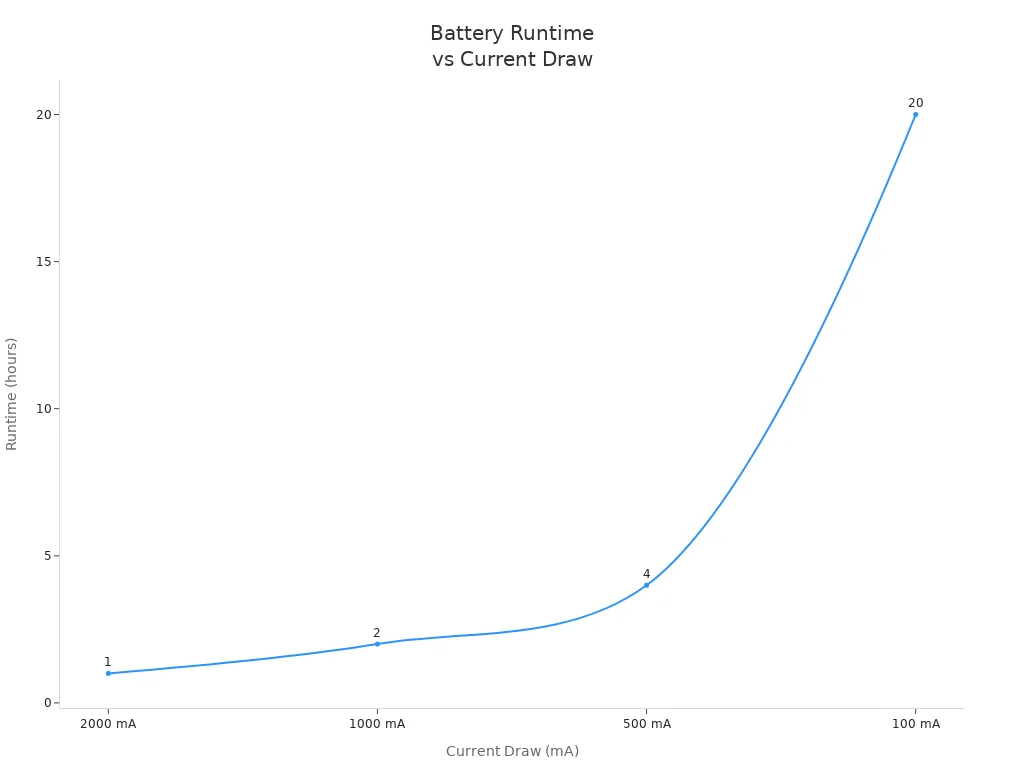
Discharge Rate
Discharge rate, shown as “C,” tells you how quickly a battery can release energy. High-performance projects like drones or RC cars need batteries with higher discharge rates. For example, a 2200mAh 25C battery can deliver 55A continuously. Burst rates allow for short, high-power demands but should not be sustained.
- Continuous Discharge Rate (e.g., 50C): Safe for ongoing use.
- Burst Discharge Rate (e.g., 80C): Safe for short bursts only.
| Discharge Rate (C) | Temperature Rise (°C) | Capacity Drop (%) | Internal Resistance Change | Voltage Change |
|---|---|---|---|---|
| 0.5 | Moderate | Minimal | Stable | Stable |
| 1 | Increased | Moderate | Slight Increase | Slight Decrease |
| 2 | High | Significant | Increased | Decreased |
| 4 | Very High | Sharp Drop | High Increase | Significant Decrease |
Note: Higher discharge rates increase temperature and reduce battery life. Always select a battery with a discharge rate that matches your device’s needs.
Safety and Handling
You must prioritize safety when working with lithium polymer batteries. Look for features such as over-discharge, over-charge, and reverse polarity protection. Many batteries include pressure-relief devices and PTC resistors to prevent overheating and damage.
| Safety Feature | Description |
|---|---|
| Over-discharge protection | Prevents damage from low voltage |
| Over-charge protection | Stops charging at safe levels |
| Reverse polarity protection | Prevents operation if connected incorrectly |
| High resistance to leakage | Reduces risk during storage |
| Low-rate discharge capability | Maintains performance at low discharge rates |
- Use only chargers designed for lithium batteries.
- Store batteries in cool, shaded places.
- Avoid full discharges and keep charge levels below 80% for storage.
Cycle Life
Cycle life measures how many times you can charge and discharge your battery before it loses performance. Most lithium polymer batteries last between 300 and 500 cycles. High discharge rates and elevated temperatures can shorten this lifespan by up to 50%. You should monitor voltage levels and avoid pushing batteries beyond their rated limits to maximize longevity.
Tip: Using the correct charger and following safe handling practices will help you get the most out of your lithium polymer battery.
Reviews of Top Lithium Polymer Batteries
BYD 3.7V 2200mAh LiPo Battery
You can rely on the BYD 3.7V 2200mAh for portable electronics and sensor projects. This single-cell lithium polymer battery offers a stable voltage output and high energy density. Its compact size fits well in handheld devices and IoT modules.
Specifications:
- Voltage: 3.7V (1S)
- Capacity: 2200mAh
- Discharge Rate: 10C (typical)
- Weight: ~45g
Pros:
- High energy density for longer runtimes
- Lightweight and slim profile
- Reliable performance in low-power devices
Cons:
- Not suitable for high-current applications
- Limited to single-cell voltage
Ideal Use Cases:
Wearable devices, portable sensors, and small handheld gadgets.
Tattu 11.1V 1300mAh LiPo Battery
Tattu’s 11.1V 1300mAh battery stands out for its consistent power delivery. You get a multi-cell lithium polymer battery that supports demanding applications, especially in drones and RC vehicles.
Specifications:
- Voltage: 11.1V (3S)
- Capacity: 1300mAh
- Discharge Rate: 45C
- Weight: ~110g
Pros:
- High discharge rate for burst power
- Robust build quality
- Reliable for high-drain devices
Cons:
- Shorter runtime due to lower capacity
- Slightly heavier for compact builds
Ideal Use Cases:
Racing drones, RC cars, and quadcopters that require quick bursts of energy.
Turnigy 7.4V 1000mAh LiPo Battery
You can choose the Turnigy 7.4V 1000mAh lithium polymer battery for projects that demand high discharge rates and stable voltage. This battery excels in airsoft and other electronics projects where performance matters.
- High discharge rates support powerful motors.
- You experience higher motor RPM and less voltage sag.
- Extended operating times make it a reliable choice for continuous use.
Specifications:
- Voltage: 7.4V (2S)
- Capacity: 1000mAh
- Discharge Rate: 20C
- Weight: ~55g
Pros:
- Delivers consistent power under load
- Compact and lightweight
- Enhances performance in high-demand scenarios
Cons:
- Limited capacity for long-duration projects
- Requires careful monitoring to avoid over-discharge
Ideal Use Cases:
- Airsoft guns
- Small robotics
- Portable electronics needing quick bursts of power
Venom 7.4V 5000mAh LiPo Battery
Venom’s 7.4V 5000mAh lithium polymer battery offers a balance of capacity and versatility. You benefit from longer runtimes and compatibility with a wide range of RC models.
| Specification | Details |
|---|---|
| Voltage | 7.4V (2S configuration) |
| Capacity | 5000mAh |
| C-rating | 30C (varies by model) |
| Weight | Manageable for RC models |
| Connector types | XT60, Dean’s, EC3/EC5, TRX |
Pros:
- Longer runtime supports extended sessions
- Manageable weight for most RC vehicles
- Versatile connector options
Cons:
- Higher capacity increases weight, which may affect performance in lightweight models
- You must match the C-rating to your motor’s needs
- Connector compatibility requires attention
| Use Case | Description |
|---|---|
| Electric Vehicles | Reliable power for electric cars and trucks |
| Portable Electric Devices | Supports tools and portable devices with high energy needs |
| Large-Scale Power Plants | Suitable for energy storage in larger systems |
Zippy Compact 3.7V 850mAh LiPo Battery
You can select the Zippy Compact 3.7V 850mAh for projects where space and weight matter most. This single-cell lithium polymer battery fits into tight spaces and powers miniature devices efficiently.
Specifications:
- Voltage: 3.7V (1S)
- Capacity: 850mAh
- Discharge Rate: 25C
- Weight: ~20g
Pros:
- Ultra-lightweight and slim
- High discharge rate for its size
- Affordable for prototyping
Cons:
- Limited capacity restricts runtime
- Not suitable for high-power applications
Ideal Use Cases:
Wearable tech, fitness trackers, and compact IoT devices.
Gens Ace 11.1V 2200mAh LiPo Battery
Gens Ace delivers a lithium polymer battery that meets the needs of high-performance drones and RC vehicles. You get a robust 3S pack with a high discharge rate.
Specifications:
- Voltage: 11.1V (3S)
- Capacity: 2200mAh
- Discharge Rate: 45C
- Weight: ~180g
Pros:
- High discharge rate for demanding motors
- Durable construction
- Consistent voltage output
Cons:
- Heavier than lower-capacity packs
- May require specific connectors
Ideal Use Cases:
Racing drones, FPV quadcopters, and high-speed RC cars.
EBL 3.7V 2000mAh LiPo Battery
You can trust the EBL 3.7V 2000mAh lithium polymer battery for consumer electronics and DIY kits. This battery features advanced safety mechanisms and a reliable energy supply.
Specifications:
- Voltage: 3.7V (1S)
- Capacity: 2000mAh
- Discharge Rate: 10C
- Weight: ~40g
Pros:
- Built-in safety features
- Stable performance for everyday devices
- Good balance of size and capacity
Cons:
- Not designed for high-drain applications
- Single-cell voltage limits use in multi-cell systems
Ideal Use Cases:
Bluetooth speakers, handheld consoles, and DIY electronics.
HRB 14.8V 6000mAh LiPo Battery
HRB’s 14.8V 6000mAh battery gives you the power needed for advanced robotics and heavy-duty equipment. This multi-cell lithium polymer battery supports long runtimes and high current draws.
Specifications:
- Voltage: 14.8V (4S)
- Capacity: 6000mAh
- Discharge Rate: 50C
- Weight: ~500g
Pros:
- Massive capacity for extended operation
- High discharge rate for powerful motors
- Suitable for industrial and research projects
Cons:
- Large size and weight
- Requires careful handling and charging
Ideal Use Cases:
Robotics, electric vehicles, and large-scale drones.
Bonka Power 7.4V 2200mAh LiPo Battery
You can use the Bonka Power 7.4V 2200mAh lithium polymer battery for remote controls and compact gadgets. This battery offers balanced performance and easy integration.
Specifications:
- Voltage: 7.4V (2S)
- Capacity: 2200mAh
- Discharge Rate: 25C
- Weight: ~120g
Pros:
- Balanced size and capacity
- Reliable for mid-range electronics
- Good discharge rate for most applications
Cons:
- Not ideal for high-drain or long-duration projects
- May require specific connectors
Ideal Use Cases:
Remote controls, compact robots, and portable test equipment.
Ovonic 11.1V 1500mAh LiPo Battery
Ovonic’s 11.1V 1500mAh battery stands out for its compatibility and versatility. You can integrate this lithium polymer battery into a wide range of platforms.
Specifications:
- Voltage: 11.1V (3S)
- Capacity: 1500mAh
- Discharge Rate: 50C
- Weight: ~120g
Pros:
- High discharge rate for quick power delivery
- Compatible with many devices
- Durable and reliable
Cons:
- Moderate capacity limits runtime
- Slightly heavier than similar-capacity packs
Ideal Use Cases:
Drones, RC planes, and multi-platform electronics.
If you have questions about which lithium polymer battery fits your project, feel free to leave a comment or reach out for personalized advice. Your feedback helps improve future recommendations.
Comparison Table

Specs Overview
You want to make an informed decision when selecting a lithium polymer battery for your electronics project. The table below compares the top 10 batteries across key specifications. You can quickly identify which battery matches your voltage, capacity, and discharge rate needs. Safety features and ideal use cases help you choose the right fit for your application.
| Battery Model | Voltage | Capacity | Discharge Rate | Safety Features | Ideal Use Cases |
|---|---|---|---|---|---|
| BYD 3.7V 2200mAh | 3.7V | 2200mAh | 10C | Over-discharge, over-charge protection | Portable devices, medical sensors |
| Tattu 11.1V 1300mAh | 11.1V | 1300mAh | 45C | Robust casing, cell balancing | Drones, RC vehicles, high-performance power |
| Turnigy 7.4V 1000mAh | 7.4V | 1000mAh | 20C | Short-circuit protection | Small electronics, airsoft, robotics |
| Venom 7.4V 5000mAh | 7.4V | 5000mAh | 30C | Multiple connector options | Robotics, electric vehicles, energy storage |
| Zippy Compact 3.7V 850mAh | 3.7V |
-

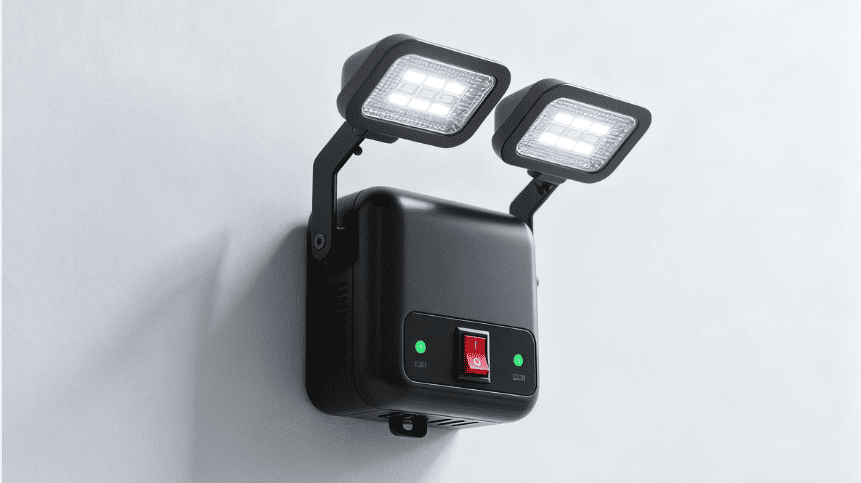 May.2025.09.15The Core Significance of Lithium-Ion Batteries in Modern Lighting EquipmentLearn More
May.2025.09.15The Core Significance of Lithium-Ion Batteries in Modern Lighting EquipmentLearn More -

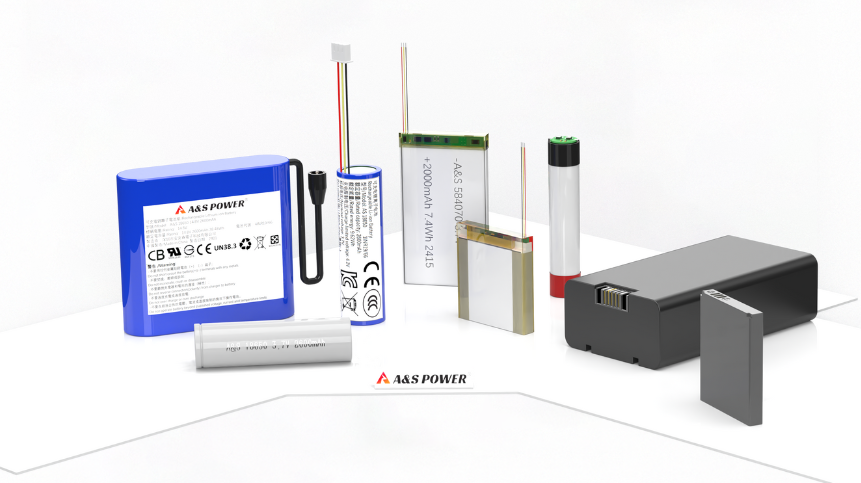 May.2025.09.12Lithium Polymer Battery vs Lithium Ion Battery: What’s the Difference?Learn More
May.2025.09.12Lithium Polymer Battery vs Lithium Ion Battery: What’s the Difference?Learn More -

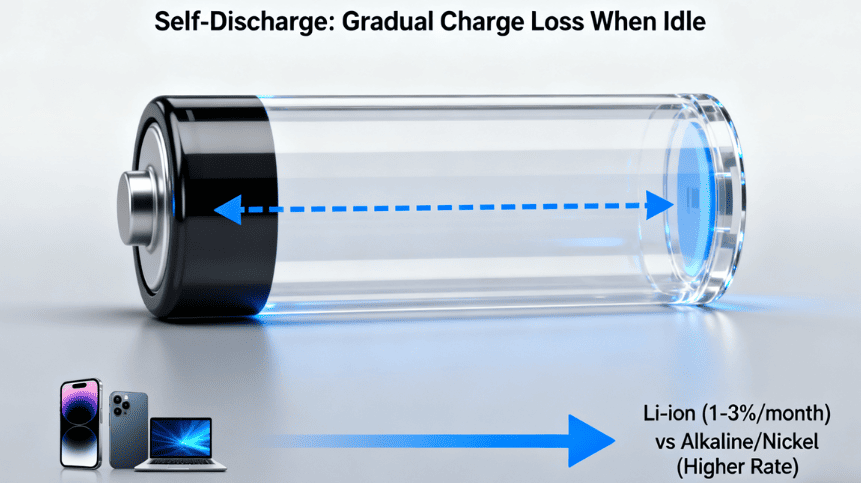 May.2025.09.11Lithium-Ion Battery Self-Discharge: Causes, Factors, and PreventionLearn More
May.2025.09.11Lithium-Ion Battery Self-Discharge: Causes, Factors, and PreventionLearn More -

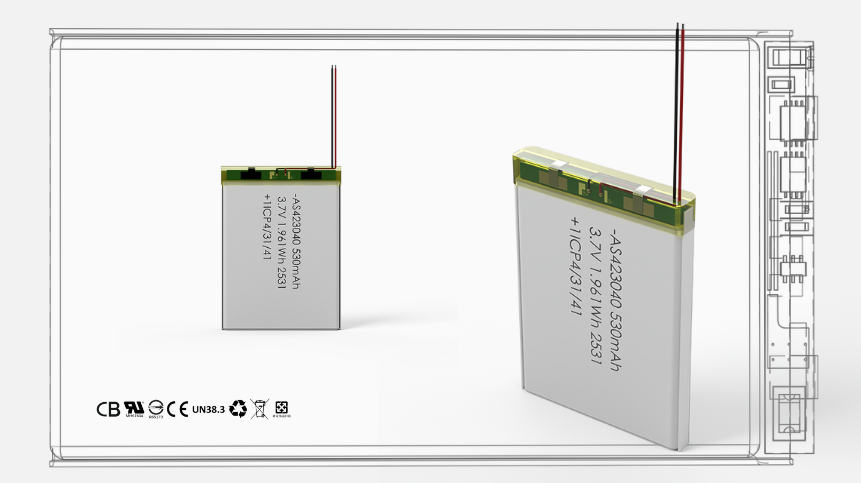 May.2025.09.08AS423040 3.7V 530mAh Li-Ion Polymer Battery – Compact, Certified, and ReliableLearn More
May.2025.09.08AS423040 3.7V 530mAh Li-Ion Polymer Battery – Compact, Certified, and ReliableLearn More -

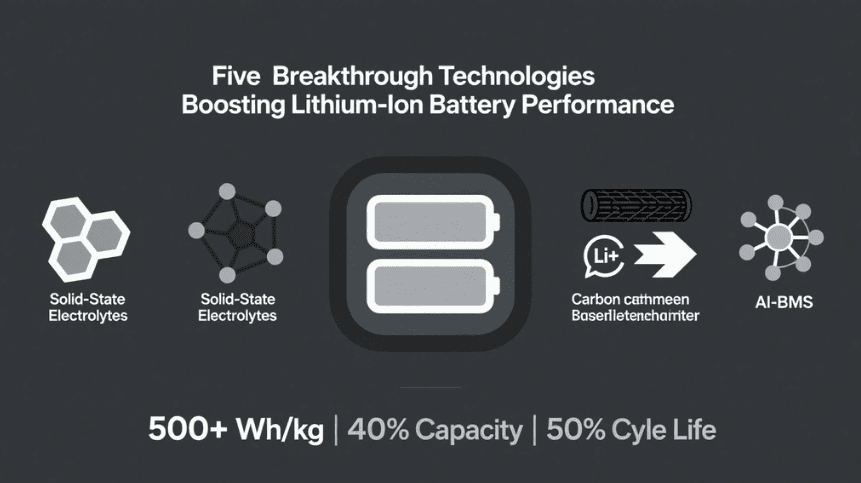 May.2025.09.04Five Breakthrough Technologies Boosting Lithium-Ion Battery PerformanceLearn More
May.2025.09.04Five Breakthrough Technologies Boosting Lithium-Ion Battery PerformanceLearn More
















